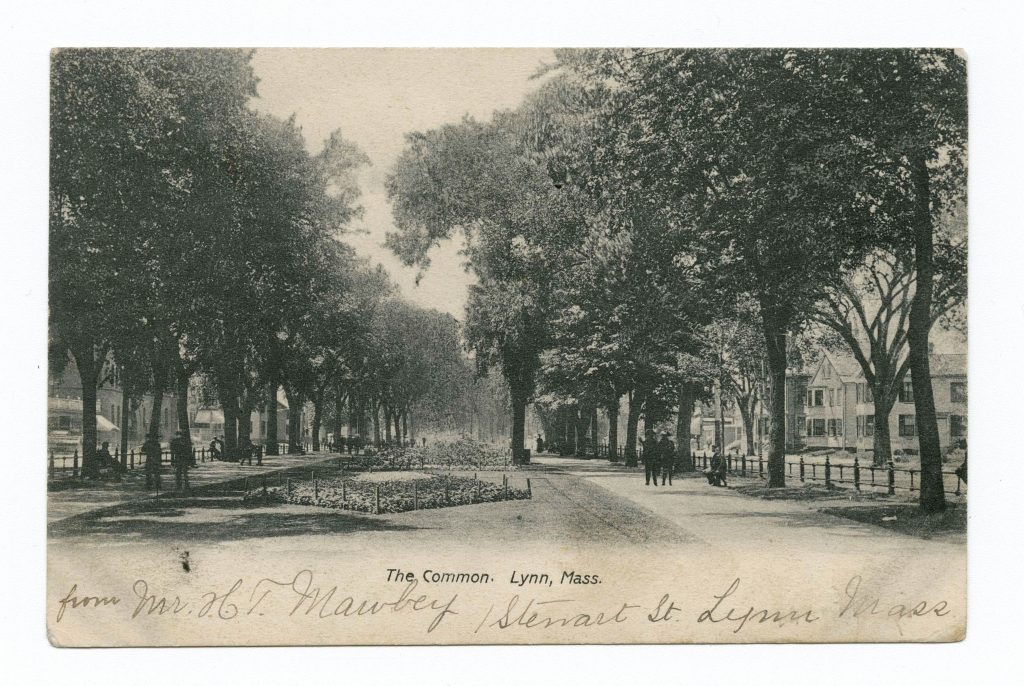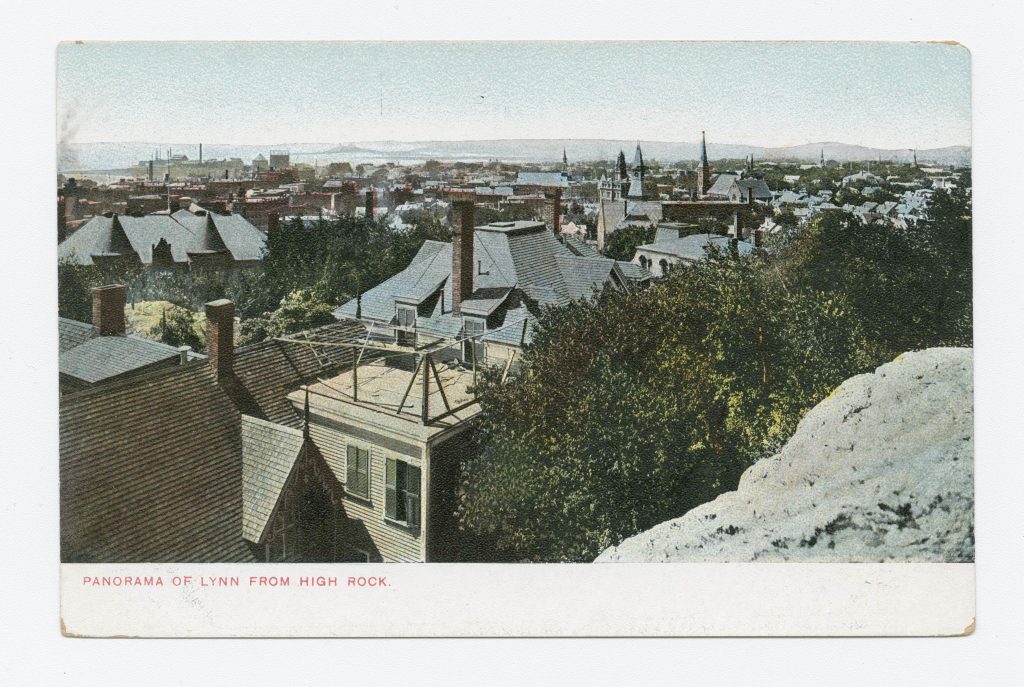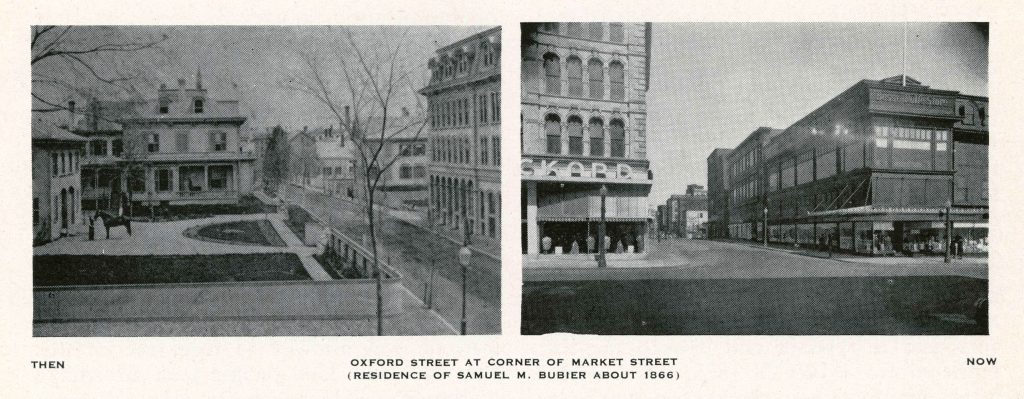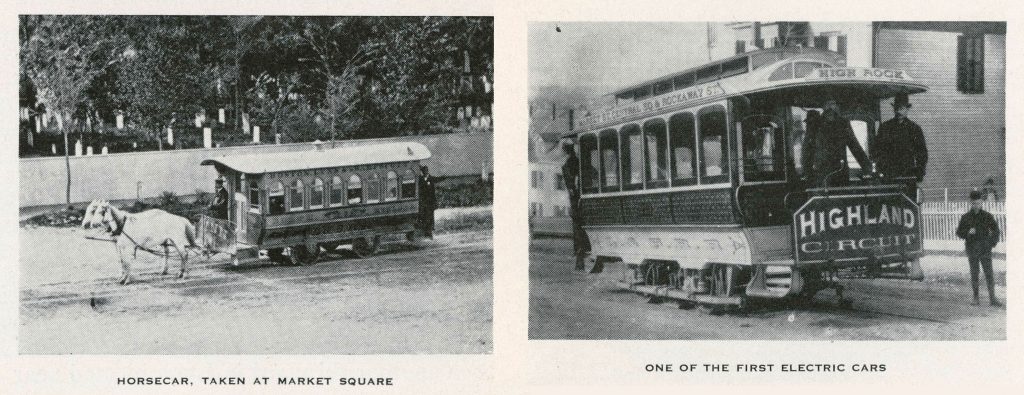By By Susan Martin, Senior Processing Archivist
In my last two posts (part I and part II), I shared the story of Mary Breed, as told in an autobiographical manuscript she sent to the MHS in 1933. I can’t in good conscience conclude her story without discussing some particularly interesting passages which relate less to the specific circumstances of her life and more to the history of Lynn, Mass.
Mary was born in 1869. When she wrote to the MHS, she was 64 years old and had lived in Lynn her whole life. Thankfully for us, she devoted the last two pages of her manuscript to describing the dramatic changes she’d seen in the city. She included details of daily life in a 19th-century industrial center, and I think it’s worth excerpting these passages at length.
Many of the Old Houses in Lynn Mass have been razed or destroyed by fire. One of the Oldest houses at the corner of Hesper and Boston Streets No 799 was razed within this year. It was two hundred and seventy eight years old. It was told that our First President George Washington Stopped there for Tea one time, as he was passing through Lynn on his way to Boston. This House was built by one of the oldest of Lynn’s Residents A Mr. Raddin. […]
I could write of many changes in West Lynn Mass, That I know of where acres of land was nothing but fields, and hills, where I used to play when a little girl, is all made into Streets, and houses are built there on Summer St. I rode in the Horse Cars, and the old barges to my work before the Electric Cars were started. Everything is changed now. And when my father was a boy, He said that Lynn Common was nothing but a Swamp and cow pasture. That was 1823 because he was 9 years of age at that time. […]
My father used to walk from Lynn to Boston over the road. So did my Grandfather and my mother when she was only 8 years of age, also to Stoneham to visit her Aunt Ellen. People didn’t mind a ten or twenty mile walk in the days when there wasn’t any cars. Everybody had to walk, except those who could afford to keep a horse and carriage. That was before my time of life.
The MHS holds a number of historical postcards of Lynn, including these:



I also found in our collections a book called Lynn: One Hundred Years a City, published in 1950, which contains a number of “then and now” photographs that give us an idea of the changes Mary was talking about.

While all this local history is of course interesting to us as archivists and historians, it was personal for Mary. As a child, she had lived on Tower Hill, formerly known as Willis’s Hill according to a county history. Willis’s Hill can be seen on this 1829 map by Alonzo Lewis, which means Mary grew up not far from the Raddin home built in 1655 and demolished in 1933.
It wasn’t just the Raddin family that stretched far back into Lynn history. Mary’s birth name, Newhall, was also an old one in the city. In Lewis’s map, you’ll see that someone named J. Newhall managed a tavern not far from the Raddin home. Mary’s married name, Breed, was apparently even older. The map shows an Allen Breed living on Mill Street in 1650. Other searches for Breeds in Lynn turn up a Breed Square, a Breed Pond, and a Breed Wharf. I wasn’t able to confirm whether Mary and her husband were related to these other Newhalls and Breeds, but it seems likely they were.
Mary may have felt nostalgic about the Lynn of her childhood, but she was certainly right when she said “everything is changed.” The city had undergone tremendous growth during her lifetime. I checked census data, and the population of Lynn in 1870 was about 28,000. By 1930, it had almost quadrupled to over 102,000, its peak. It has taken almost 100 years for the population to inch up close to that number again.
I was especially interested in Mary’s description of how modes of transportation had changed. According to my research, horse cars operated in Lynn from 1860 to 1888, with the first electric car appearing in 1887. As for travel outside the city, many people, even children, regularly walked to Boston, which Google Maps tells me is over 11 miles and would take almost 4 hours.

I’ll let Mary have the last word. Here’s an excerpt from the final paragraph of her reminiscences.
Well I would like to have been a writer if I could of had a chance to go around to places and see the Country. I have been to Maine as far as New Sharon and Belgrade Lakes and to Wilton, and North Jay, and Farmington Maine. And To Farmington, Milton, and Union, N.H. Alton Bay on the Lakes, where I have spent my vacations. But now I cannot go anywhere, but stay at home and sew to take up my time. I read a lot of magazines and books.


Every Breed in America is descended from the first Breed to settle in Lynn. Sorry, but I can’t recall where I came across that fact. I may have come across it while doing a research project on the history of art education in Lynn. Spent a lot of time at LHS, as well as reading much about the history of the city.